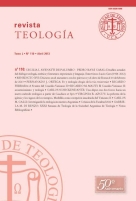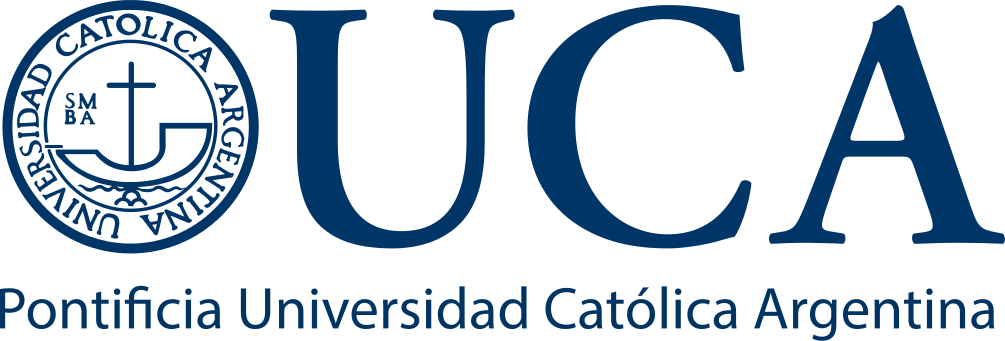Por favor, use este identificador para citar o enlazar este ítem:
https://repositorio.uca.edu.ar/handle/123456789/7300| Campo DC | Valor | Lengua/Idioma |
|---|---|---|
| dc.contributor.author | Mauti, Ricardo M. | es |
| dc.date.accessioned | 2019-06-20T00:07:24Z | - |
| dc.date.available | 2019-06-20T00:07:24Z | - |
| dc.date.issued | 2013 | - |
| dc.identifier.citation | Mauti, Ricardo Miguel, El Concilio Vaticano II : acontecimiento y teología [en línea]. Teología, 110 (2013). Disponible en: https://repositorio.uca.edu.ar/handle/123456789/7300 | es |
| dc.identifier.issn | 0328-1396 | - |
| dc.identifier.uri | https://repositorio.uca.edu.ar/handle/123456789/7300 | - |
| dc.description.abstract | Resumen: El Concilio Vaticano II ha sido el acontecimiento eclesial más importante del siglo XX, punto de llegada de un esfuerzo de renovación que se fue gestando en el seno de la Iglesia, y que tuvo en los movimientos bíblico, litúrgico y ecuménico su expresión más acabada. La teología que ‘hizo’ el Concilio desempeñó un papel primordial; los teólogos más representativos “paradójicamente” en otro tiempo marginados, llevaron adelante una tarea ejemplar asistiendo a los Padres conciliares. De sus Diarios redactados durante aquellos años, el ‘acontecimiento’ conciliar surge con una nueva luz, la cual permite una nueva recepción del Concilio a la par que una revalorización de su teología. El autor del artículo analiza los Diarios de tres teólogos: M. -D. Chenu, Y. M.-J. Congar y H. de Lubac, mostrando la importancia que este tipo de escritos tienen no solo como fuentes para la historia del Concilio, sino también como testimonio del “giro” decisivo operado por la teología en el siglo XX. | es |
| dc.description.abstract | Abstract: The Second Vatican Council has been the most important ecclesiastic event in the 20th Century. It has been the finish line of an effort of renovation that had been brewing in the heart of the Church, and whose most thorough expression were the biblical, liturgical and ecumenical movements. The theology ‘made’ by the Council played a central role; the most representative theologians who had been until then ‘paradoxically’ excluded carried out an exemplary task assisting the Council Fathers. The Council ‘event’ comes out renewed from their Diaries which had been written in those years. It comes out of a new light, a light that enables a new reception of the Council as well as the appreciation of its theology. The author of the article analyses the Diaries of three theologians M. -D. Chenu, Y. M.-J. Congar y H. de Lubac, showing the importance of their writings as valuable sources for the council history and as proof of the decisive ‘turning’ in the 20th century theology. | es |
| dc.format | application/pdf | es |
| dc.language.iso | spa | es |
| dc.publisher | Universidad Católica Argentina. Facultad de Teología | es |
| dc.rights | Acceso Abierto | es |
| dc.rights.uri | https://creativecommons.org/licenses/by-nc-sa/4.0/ | es |
| dc.source | ISSN 0328-1396 | es |
| dc.subject | Concilio Vaticano (2do : 1962-1965) | es |
| dc.subject | TEOLOGIA | es |
| dc.subject | TEOLOGOS | es |
| dc.subject | MAGISTERIO | es |
| dc.title | El Concilio Vaticano II: acontencimiento y teología : una aproximación desde los diarios de M.-D. Chenu, Y. M.-J. Congar y H. De Lubac | es |
| dc.title | Vatican Council II: event and theology : an approach from the diaries of M.-D. Chenu, Y. M.-J. Congar and H. De Lubac | es |
| dc.type | Artículo | es |
| uca.path | Teología|2013 Tomo L nº 110 | es |
| uca.disciplina | TEOLOGIA | es |
| uca.filename | /home/data-uca-generic/folder_revistas/Revistas varias/Teologia/110/concilio-vaticano-ii-acontecimiento-teologia/metadata.xml | es |
| uca.issnrd | 1 | es |
| uca.affiliation | Fil: Mauti, Ricardo M. Pontificia Universidad Católica Argentina. Facultad de Teología; Argentina | es |
| uca.orden | 05 | es |
| uca.version | publishedVersion | es |
| item.grantfulltext | open | - |
| item.fulltext | With Fulltext | - |
| item.languageiso639-1 | es | - |
| crisitem.author.orcid | 0000-0001-7707-4970 | - |
| Aparece en las colecciones: | TEO - 2013 Tomo L nro. 110 | |
Ficheros en este ítem:
| Fichero | Descripción | Tamaño | Formato | |
|---|---|---|---|---|
| concilio-vaticano-ii-acontecimiento-teologia.pdf | 379,73 kB | Adobe PDF |  Visualizar/Abrir |
Visualizaciones de página(s)
635
comprobado en 30-abr-2024
Descarga(s)
3.584
comprobado en 30-abr-2024
Google ScholarTM
Ver en Google Scholar
Este ítem está sujeto a una Licencia Creative Commons

